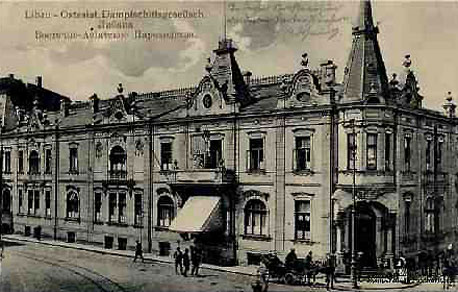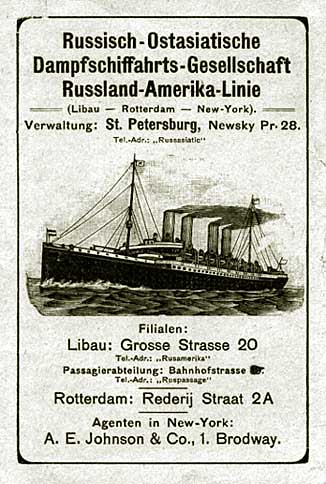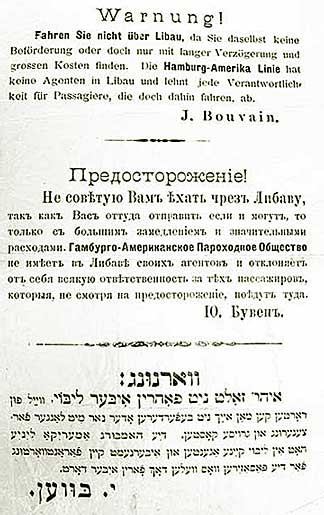
Libau (Liepaja) in Latvia as emigration port
"… traffic via Libau reached the enormous figure of 50,506 [emigrants] in the last year ;
another 20,000 have left from Hangö, Riga and other harbours. As a result, with one blow, Libau has apportioned to itself a percent of emigrant transport
greater than that of the traditional harbour of Rotterdam and rivalling that of the excellently.managed harbor of Antwerp. Great efforts are being made by the German
so as not to be left behind."
(Hamburg shipping company Hapag to Hamburg Emigration Authority, 28 February 1907)
Because of this, the Hapag began to reinforce its Libau-Hamburg route in 1907 (alternatively Libau-Lübeck-Hamburg).
Emigration via Libau developed from 1880 on, after a modern harbor was constructed in 1868, and after the Russian railway network (for example the Kovno-Libau line) had been laid down. The total number of emigrants up to 1914 remains unclear. It was perhaps a half-million. On the other hand, this means millions of descendants of these emigrants, mainly in USA, Canada, Great Britain, South Africa and even Argentina. The emigrants came from the western part of the Czarist empire (Russians, Letts, Lithuanians, Poles; the proportion of Jews was patricularly high).
The main carriers were at first Scandinavian – for example the Danish company Det Forenede Dampskibs-Selskab in Copenhagen – and British(Union-Castle Line, Wilson Line). The later Russian East Asian Steamship Company was also founded in Copenhagen. Because of health controls on the German borders, which began in 1892, East European emigrants increasinlgy used the sea route to England. (The opening of a canal between the North Sea and the Baltic in 1895 further reduced travelling time from the Baltic region by a day.) A further, important competitor was, as previously mentioned, the Hamburg shipping line Hapag. "Last but not least", there was a Russian attempt to profit from emigration: the Russian-American Steamship Company (from 1906 on),
Emigration via Libau has been researched principally in Great Britain. The publications are almost all concerned with Jewish emigrants and immigration to Great Britain and/or South Africa (see below). An internet database of passport applications for Riga in the year 1900 (20.000 persons) has been compiled by U.S. Jewish genealogists.
Competition ...
and a counterattack from the Hapag. |
 |